|
In the last issue we presented some Lohan paintings. This time we would
like to present some images of Lohan statues.
Lohan ( 羅漢 ) is the Chinese term for Arhat in Sanskrit. In Buddhism,
Arhat has three meanings:
- Worthy of Offerings ( 應供 ) - they are worthy of the offerings of
gods and people.
- Killer of thieves ( 殺賊 ) - thieves refer to the ignorance ( 無明
), affliction ( 煩惱 ) and the six sense organs ( 六根 ), namely, eyes,
ears, nose, tongue, body and mind. What the thieves take away from
us is our unsurpassed true treasures, which refer to our
self-nature, Buddha nature and reality.
- Not born ( 無生 ) - Arhat is not subject to production (birth) and
extinction (death). An arhat has attained the state of Patience of the
Non-production of Dharmas ( 無生法忍 ), so does not have to undergo
the cycle of birth and death again.
The names of the sixteen Lohans are as follows:
- Pindolabharadvaja ( 賓羅跋囉惰闍 / 賓頭盧頗羅墮 ) - he is regarded
as the chief of the sixteen, who was firstly instructed by Shakyamuni
Buddha to stay in this world forever to help and save the sentient beings.
- Kanakavatsa ( 迦諾迦伐嗟 )
- Kanakabharadvaja ( 迦諾迦跋惰闍 )
- Suvinda ( 蘇頻陀 )
- Nakula ( 諾距羅 )
- Bhadra ( 跋陀羅 )
- Karika ( 迦理迦 )
- Vajrapudra ( 伐闍羅弗多羅 )
- Svaka ( 戍博迦 )
- Panthaka ( 半托迦 )
- Rahula ( 囉怙羅 / 羅云 / 羅候羅 )
- Nagasena ( 那伽犀那 )
- Ingata ( 因揭陀 )
- Vanavasin ( 伐那婆斯 )
- Ajita ( 阿氐多 )
- Suddhipanthaka or Cudapanthaka ( 注荼半托迦 / 周利槃陀伽 )
The statues covered in this issue range from Sung to Ming Dynasties.
Although early Buddhist statues were introduced to China from India during
the Han Dynasties, all the Lohan statues here are of typical Chinese look
and based on the Chinese traditions. The Lohan statues depict very diversified
personalities, body postures and facial features . They can reflect some
of the daily lives of China in those days. Many of them are in fact combinations
of both Buddhism and Chinese legends. It is fair to say that such artistic
forms are more secular than religious.
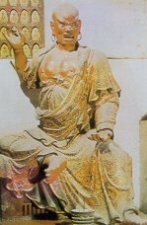
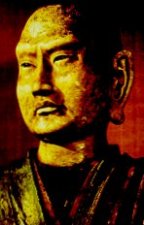
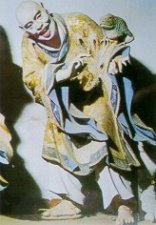
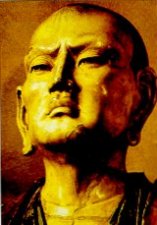
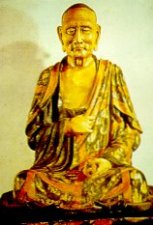

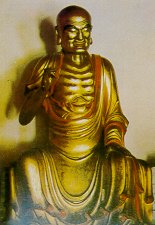
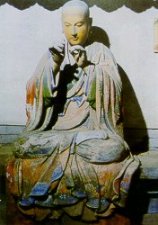
|



